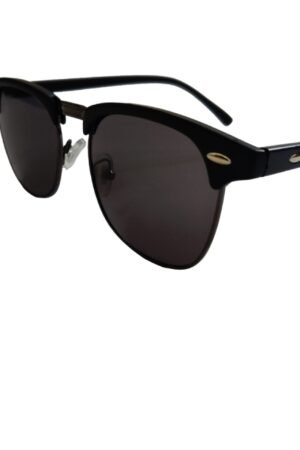Aviator sunglasses have achieved iconic status, transcending their original purpose and becoming a symbol of timeless style and rebellion. What began as functional eyewear for pilots has evolved into a beloved fashion accessory embraced by individuals all over the world. In this blog post, we will delve into the fascinating history of aviator sunglasses, tracing their roots, and exploring the pivotal moments that propelled them from the cockpit to the realm of pop culture.
Origins: Function Meets Fashion
Aviator sunglasses were first crafted in the 1930s, in response to the needs of pilots seeking eyewear that could protect their eyes from the sun’s harsh glare at high altitudes. American optical manufacturer Bausch & Lomb collaborated with the U.S. Army Air Corps to design sunglasses featuring dark, tinted lenses and distinctive teardrop-shaped frames. The emphasis was on providing maximum eye protection while maintaining optimal vision, a crucial consideration for aviation safety.
The Rise of Aviator Sunglasses: From Goggles to Fashion Accessory
After World War II, aviator sunglasses transitioned from military gear to civilian fashion. Former servicemen, intrigued by the rugged charm and practicality of aviator frames, popularized the style in the post-war era. The endorsement of the iconic Ray-Ban brand played a significant role in transforming aviator sunglasses into a symbol of coolness and adventure.
In 1936, Ray-Ban introduced its own version of aviator sunglasses, aptly named “Ray-Ban Aviators.” The company’s innovative use of lightweight metal frames and green-tinted lenses provided improved comfort and reduced glare, further cementing the popularity of aviators. Ray-Ban’s association with pop culture figures such as General Douglas MacArthur and Hollywood celebrities like Tom Cruise in “Top Gun” contributed to their rise as a fashion statement.
Aviator Sunglasses in Pop Culture: A Timeless Fashion Statement
Aviator sunglasses reached new heights of popularity throughout the 20th century, becoming an essential accessory associated with rebellion, adventure, and resilience. In the 1950s, icons like Marilyn Monroe and James Dean embraced aviator sunglasses, accentuating their allure and creating an aura of mystery. The distinctively masculine appeal of aviators was further solidified through their adoption by musicians, most notably by rock legends such as Freddie Mercury and John Lennon.
The 1980s marked a pivotal moment for aviator sunglasses, as they became synonymous with an edgy and rebellious style. Tom Cruise’s Maverick character in the film “Top Gun” propelled aviators to mainstream fame, solidifying their status as a popular fashion choice. From that point, aviator sunglasses became a staple in the wardrobes of celebrities, athletes, and fashion-forward individuals worldwide.
Aviator Sunglasses: An Emblem of Timeless Style
Throughout their evolution, aviator sunglasses have retained their signature features: thin metal frames, full coverage, and teardrop-shaped lenses. This timeless design has enabled aviators to transcend the whims of fashion trends and maintain their appeal across generations.
Today, aviator sunglasses are available in various sizes, lens colors, and materials, allowing people to customize their look while paying homage to the classic style. They continue to attract those seeking a combination of functionality and glamour, making aviators a versatile accessory suitable for both everyday wear and special occasions.
Conclusion: From Pilots to Pop Culture Icons
The evolution of aviator sunglasses from a specialized tool for pilots to a globally recognized fashion statement is a testament to their enduring appeal. Through their association with military aviation, Hollywood blockbusters, and iconic figures, aviators have solidified their place in history. As we continue to embrace aviator sunglasses as a fashion essential, their timeless design and aura of adventure ensure they will remain a symbol of style and elegance for years to come.
Next time you slip on a pair of aviator sunglasses, take a moment to appreciate their rich heritage and their ability to capture the spirit of rebellion and sophistication. Aviators are not just sunglasses; they are a window to a world of timeless fashion and iconic allure.






Leave a Reply